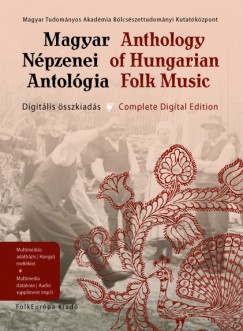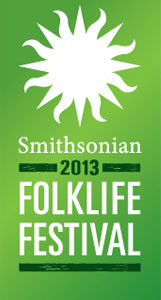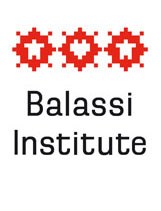by Pál Richter
 The series of the Hungarian Folk Music Anthology to present the large regional units of the traditional music of the Hungarians was launched upon the initiative and rationale of György Martin. A total of 7 albums were made between 1985 and 2002. The initiative and the series were not unprecedented: earlier, three albums of four records each edited by Benjamin Rajeczky presented a selection of the Hungarian Folk Music with UNESCO support. Rajeczky arranged the material for each album identically, devoting one record or record side each to the old stratum, the European legacy, the tunes of the Hungarian new style, instrumental music and tunes of the folk customs.
The series of the Hungarian Folk Music Anthology to present the large regional units of the traditional music of the Hungarians was launched upon the initiative and rationale of György Martin. A total of 7 albums were made between 1985 and 2002. The initiative and the series were not unprecedented: earlier, three albums of four records each edited by Benjamin Rajeczky presented a selection of the Hungarian Folk Music with UNESCO support. Rajeczky arranged the material for each album identically, devoting one record or record side each to the old stratum, the European legacy, the tunes of the Hungarian new style, instrumental music and tunes of the folk customs.
In the Anthology, the material is arranged music geographically, presenting the Hungarian folk music dialects in 7 parts, the typical genres, tune types, customs of the given area being introduced by the best vocal and instrumental performers of the regions. In the beginning, each album consisted of five LPs with material of some four hours, but the series was interrupted after the fourth album of five LPs published with a detailed booklet. After the turn of 1989/90 Hungaroton was unable to continue, so the Institute for Musicology took over the series. The next two volumes of the series were released on 2×3 cassettes instead of LPs in 1993 and 1995. The seventh – closing – album of the Anthology was again released on Hungaroton label, now on 4 CDs. The original plans also included the publication of the album material in book form. It was alone realized for the fourth – the Great Plain – album five years after the release of the LPs, in 1994.
Despite its vicissitudes, the Hungarian Folk Music Anthology has been the most complete series of publications so far, encompassing the entire stock of Hungarian folk music and disseminating it in broad circles. The idea to create a stop-gap complete edition in one publication has long been deliberated. The plan was partially realized when in 2008 the Hungarian language version of the unified anthology came out on DVD-Rom upon the initiative and with the financal support of the Folk Music Department of the Liszt University of Music. Being a teaching aid, however, the unified anthology could not be sold on the market.
The present publication is an improved version of the 2008 teaching aid; it has updated, unified in appearance, refrences, data handling, and refreshed the material edited 25 years ago and also includes all texts (lyrics, too) in English. The first album devoted to the musical accompaniment of folk dances enriches the characteristics of Szilágyság, Transylvania, Bukovina and Moldavia with 130 new tunes and with the seperated studies on the territorial subdivision of folk dance music by István Pávai. The bulk of the second album called “The North” earlier was also enlarged: Lujza Tari rewrote and extended her study and added some 50 items to the illustrations. As for Transdanubia, the introductory study was massively revised by the former editor Imre Olsvai’s monograph of Transdanubia gathering dust in a drawer for many years. Thanks to digitalization, the entire stock of tunes can be searched by different viewpoints (place name, performer, collector, genre, etc.), users can access the text, score, data, sometimes photos, and the sound recording of each item easily and along diverse paths. The sound recordings are also presented separately in mp3 format on an appended CD.
This publication has achieved at last a main goal of Hungarian folk music research for over a century now: it gives a comprehensive picture of the traditional music of the entire Hungarian language territory in sufficient detail, in music geographical arrangement, supplied with introductory studies and illustrated with good quality audio and some video recordings as well. In addition, it is now available for experts and the interested public abroad as well.
When editing this DVD-Rom, we had to take it for granted that the extent to which different dialectal areas have been researched and to which the volumes presenting the materials have been edited varies. We had to bear with the circumstance that there are handwritten and typed scores; that in some volumes each tune is transcribed, in others not; that it is up to each editor to decide whether they re-edit the earlier publications or leave them untouched. As a result of the latter decision, some albums reflect the state of affairs some 10–25 years ago, whereas we have now more ample information on smaller regional subunits within the large dialectal areas. That applies particularly to the Transylvanian dialect, since large volumes of material have been collected there since the 1990s. In one word, the present version of the albums is not unified as regards editing principles, but it is unified as to access to all items. Owing to the latter aspect, it can present a complete and all-inclusive picture of the folk music tradition of the Hungarian language territory for the first time in the history of Hungarian ethnomusicological research and publication.
Brief description of the albums
1. Dance music
The first album presents the accompanying music of dances. Originally published in 1985, it had 246 tunes from 73 points of the dialectal region arranged by dance dialects named the West, the Tisza region and Transylvania. It was edited by György Martin–Ernő Pesovár–István Németh, with collaborators Béla Halmos, István Halmos and András Vavrinecz. Preserving the original version the material of Szilágyság and Transylvania was re-edited separately by István Pávai in 2011–2012. Now the Western and Tisza areas are represented by 149 tunes (81 items), to the original material introducing Szilágyság and Transylvania published in the former edition an immensely enlarged exemplary (with 130 items) has been attached, thanks to István Pávai’s recent research.
2. Upper Hungary (earlier “The North”)
The second album (first published in 1986) is the first one in the row of folk music dialects. Dialect II in Bartók’s system was elaborated by Lujza Tari and László Vikár. It originally contained 209 tunes from 93 villages. Lujza Tari has re-written the study for the present publication and increased the number of tunes to 256.
3. Transdanubia
The album was released in 1992 with 262 variants of 130 tune types from 132 places. The monographic introduction was written by the editor Imre Olsvai in the second half of the 1990s. Compared to the first release, his more detailed introductory study appears here, supplied with numerous music examples transcribed.
4. Great Hungarian Plain
The album of the Great Plain edited by Katalin Paksa and István Németh was published in 1989, followed by the material in book form in 1994. It contains 243 tunes from 109 places.
5-6. Szilágyság and Transylvania (earlier The East 1-2)
The 2×3 cassettes contained the “Transylvanian” folk music dialect in the edition of Bálint Sárosi and István Németh. The double album contains 304 tunes from 74 localities.
7. Moldavia and Bukovina
The last album presents the music of Hungarians outside the Carpathians, in Moldavia and Bukovina. The Moldavian material was selected by Mária Domokos, that of Bukovina by István Németh, they co-editing the final version, too. The material contains 182 songs (110 from Moldavia, 72 from Bukovina) collected from 87 performers in 38 settlements.
The technical reconstruction of the original tunes (except AHFM7) does credit to Pál Sztanó.






